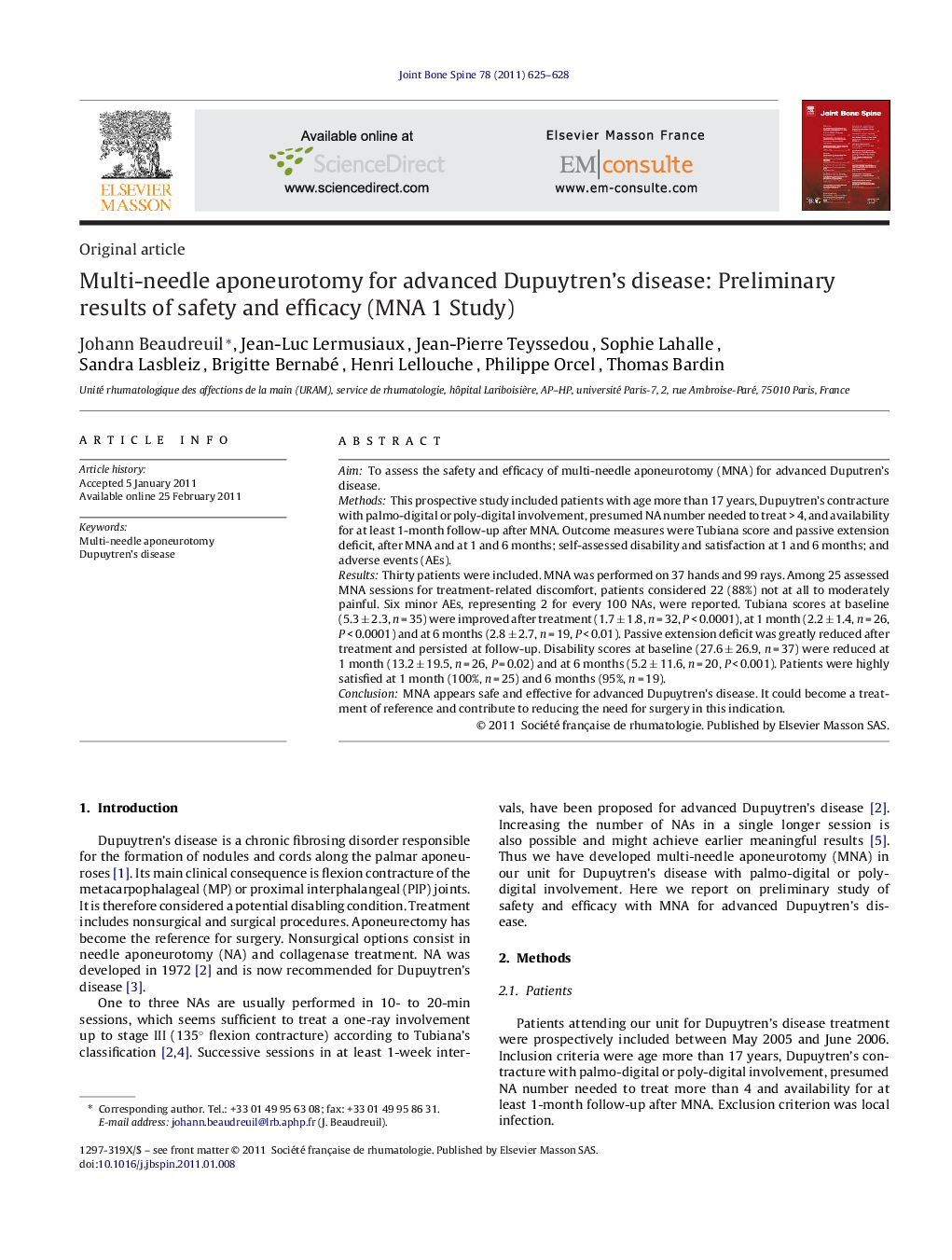| Article ID | Journal | Published Year | Pages | File Type |
|---|---|---|---|---|
| 3366530 | Joint Bone Spine | 2011 | 4 Pages |
AimTo assess the safety and efficacy of multi-needle aponeurotomy (MNA) for advanced Duputren's disease.MethodsThis prospective study included patients with age more than 17 years, Dupuytren's contracture with palmo-digital or poly-digital involvement, presumed NA number needed to treat > 4, and availability for at least 1-month follow-up after MNA. Outcome measures were Tubiana score and passive extension deficit, after MNA and at 1 and 6 months; self-assessed disability and satisfaction at 1 and 6 months; and adverse events (AEs).ResultsThirty patients were included. MNA was performed on 37 hands and 99 rays. Among 25 assessed MNA sessions for treatment-related discomfort, patients considered 22 (88%) not at all to moderately painful. Six minor AEs, representing 2 for every 100 NAs, were reported. Tubiana scores at baseline (5.3 ± 2.3, n = 35) were improved after treatment (1.7 ± 1.8, n = 32, P < 0.0001), at 1 month (2.2 ± 1.4, n = 26, P < 0.0001) and at 6 months (2.8 ± 2.7, n = 19, P < 0.01). Passive extension deficit was greatly reduced after treatment and persisted at follow-up. Disability scores at baseline (27.6 ± 26.9, n = 37) were reduced at 1 month (13.2 ± 19.5, n = 26, P = 0.02) and at 6 months (5.2 ± 11.6, n = 20, P < 0.001). Patients were highly satisfied at 1 month (100%, n = 25) and 6 months (95%, n = 19).ConclusionMNA appears safe and effective for advanced Dupuytren's disease. It could become a treatment of reference and contribute to reducing the need for surgery in this indication.
